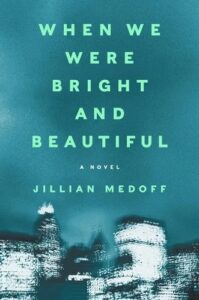While crime novels, especially those with courtroom scenes, are the most satisfying to read, they’re the most challenging to write. I say this not just as a long-time aficionado but as an author. After publishing four family dramas—lots of feelings, not much plot—I wanted to level up in my fifth. In When We Were Bright and Beautiful, a white, uber-wealthy Princeton athlete is accused of raping his former girlfriend. His sister Cassie narrates the story, and we follow the fallout on their family, from indictment through verdict. In my rendering, a series of twists culminates in a courtroom reveal that casts everything that came before in a different light. By the end, the reader realizes that Cassie is telling two related stories about two separate crimes—and she is the victim of one of them.
Well, this was my goal, anyway. Instead, it was immediately clear I was in over my head. Flattened by my insecurities, I wasted 18 months trying to write around the trial. I set the story 25 years in the future, I downgraded the attack from a felony to a misdemeanor, I had the parties settle. Finally, I ran out of options. It was time to either rise to the challenge or set fire to my manuscript and find a new project.
Every detail demands painstaking attention when writing a crime novel, from structure to character development to pacing to payoff. There are so many ways to screw up! If your opening chapters are too slow, you lose momentum. Too fast, and you confuse the reader. A few false notes and you lose credibility. Give away too many clues, over-engineer the plot, or wait too long to reveal whodunit, and readers walk away frustrated and unsatisfied.
In the end, I stayed the course; after seven years of work, When We Were Bright and Beautiful was released this week. To write it, I studied courtroom dramas going back to the 1970s. I deconstructed each one from every angle, trying to learn how they worked. It was a lesson in abject humility. Here are eight that stunned me with their artistry, insight, and sheer brilliance.
Warning: spoilers abound!
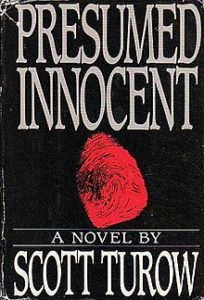
Scott Turow, Presumed Innocent
Scott Turow has published lots of blockbusters since Presumed Innocent, but his debut broke new ground when it hit shelves in 1987. Compulsively readable, the novel was equal parts whodunit, courtroom thriller, and dysfunctional family drama. Rusty Sabich, the prosecutor who’s charged with murder, narrates, and we follow him through every stage of the criminal investigation, the trial, and the aftermath. Turow did a masterful job illustrating Sabich’s evolution. We become invested in the lawyer’s innocence, even as he fails to disclose his affair with the victim, redirects the investigation, and tampers with evidence. To my mind, the novel’s most unforgettable moment is when Turow reveals the murderer. You’re not just left reeling from the killer’s identity; you now have to reevaluate, through a different lens, the entire book you just read and what this means for Sabich’s life and career going forward.

Elizabeth Wetmore, Valentine
Valentine is one of the most electrifying novels of the past few years. The book opens with the brutal rape of a Mexican American teenager on Valentine’s Day, 1975, in a West Texas town. But unlike thrillers that exploit the plight of young women, Valentine focuses on a few white women who respond to her assault. Like O’ Beautiful by Jung Yun, another brilliant novel that examines male brutality, racism, and insular communities in a small town on the brink of an oil boom, Valentine illustrates how crimes are tried in a community’s churches, bars, and living rooms before they ever move to the courtroom.

Chris Bohjalian, Midwives
Blending moral, medical, and political issues with a classic coming-of-age story, Midwives is the story of a midwife accused of murdering a pregnant friend in rural Vermont while performing her job. Chris Bohjalian does a remarkable job crafting the character of Connie Danforth, a 14-year-old girl who sat through her mother’s trial and recounts the experience years later. The novel traces Connie’s perspective as she moves from steadfast loyalist to suspicious observer to possible accomplice. Meanwhile, is her mother guilty or innocent? The verdict, which hinges on Connie, is a knockout.
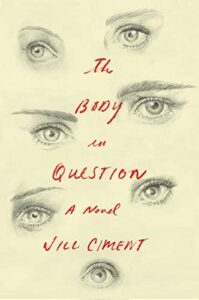
Jill Ciment, The Body in Question
A short, addictive novel that packs an enormous punch. I read it compulsively in one sitting, and when I finished, I instantly started over. Ciment subverts the traditional courtroom procedural in two clever ways. First, rather than focus on the accused, accuser, or law enforcement, she hones in on the jury, specifically jurors C-2 and F-17, who have a passionate affair while sequestered. Second, Ciment illustrates the jurors’ experience in and out of the courtroom. The first half of the novel details the three-week trial of a wealthy teenager accused of murdering her toddler brother; the latter half deals with the emotional fallout of the trial on the jurors’ private lives. Juror C-2’s observations, thoughts, notes, and relationship with her fellow juror drive the story. As the push and pull of their entanglement play out against the backdrop of a gruesome murder, Ciment explores the big questions: guilt versus innocence, loyalty versus betrayal, life versus death.
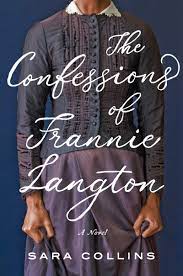
Sara Collins, The Confessions of Frannie Langton
Like Scott Turow, Sara Collins’s ambitious and gripping debut broke new ground when it was published in 2019. Set in London in the early 1800s, The Confessions of Frannie Langton follows the trial of Frances Langton, a Jamaican servant accused of brutally stabbing her white employers to death. By weaving in vivid, sensual elements of historical and gothic fiction, and confronting racism, forbidden love, and drug addiction, Collins reinvented the crime novel for a new generation of readers.
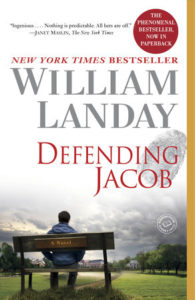
William Landay, Defending Jacob
I’m a sucker for a terrifying final twist, and Defending Jacob more than delivers. Like Presumed Innocent, this psychological thriller combines elements of a courtroom thriller and multilayered family drama. The two novels also feature a prosecutor who knows more about a murder case than he leads you to believe. In Defending Jacob, however, the accused is the prosecutor’s son, a classmate of the victim, which allows Landay to explore the ties that bind families together and rip them apart. Landay’s approach to the courtroom scenes is spellbinding. While the novel takes place mostly during the aftermath of the murder and the subsequent trial, the story is interwoven with witness testimony from a grand jury trial that occurs six months later. This seemingly unrelated testimony adds to the book’s suspense, especially since it’s not revealed until the final chapter, when you’re hit with the (aforementioned) knockout reveal.
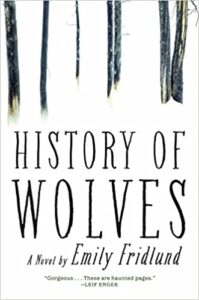
Emily Fridlund, The History of Wolves
When I was in the throes of my trial avoidance, I tried—and failed—to emulate The History of Wolves. The novel, a gorgeous, insightful, and complex thriller and bildungsroman, haunted me for weeks after I read it. Like Midwives, The History of Wolves is narrated by a woman as she reflects on the life-altering experience she had years before, when she was a lonely, isolated 14-year-old. In Fridlund’s book, however, the trial happens off-stage and is referred to during pivotal moments in the story rather than laid out step by step. These references were so deft and rich, I was convinced Fridlund must’ve written the entire trial and then pulled out the salient points. Either that or she has magical powers. The History of Wolves tackles communal living, loneliness, pedophilia, Christian Science, and freezing Minnesota winters to create one of the past decade’s most transportive and mesmerizing books.
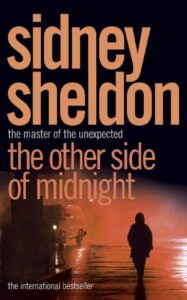
Sidney Sheldon, The Other Side of Midnight
While The Other Side of Midnight is, admittedly, a sentimental favorite, Sidney Sheldon is the OG of courtroom thrillers. When my sister and I were teenagers, we passed one dog-eared paperback back and forth on a long plane ride. Published in 1973, the novel has a 70’s jet-set vibe that recalls the days of Jackie Kennedy and Ari Onassis soaking in the sun on the Isle of Capri. A sweeping story of doomed love, lust, power, and vengeance, The Other Side of Midnight is centered around four star-crossed characters whose lives become enmeshed: a beautiful French actress, a dynamic Greek tycoon, a handsome war hero, and the unsuspecting American woman. Of this foursome, one will die, and two will stand trial for her murder. Sidney Sheldon was an award-winning writer, director, and producer; and The Other Side of Midnight showcases every one of his prodigious talents. Neither my sister nor I ever forgot this novel. Although I can’t say for sure that it influenced our lives, she’s a lawyer, and I’m a novelist, so it definitely had some impact.
***
